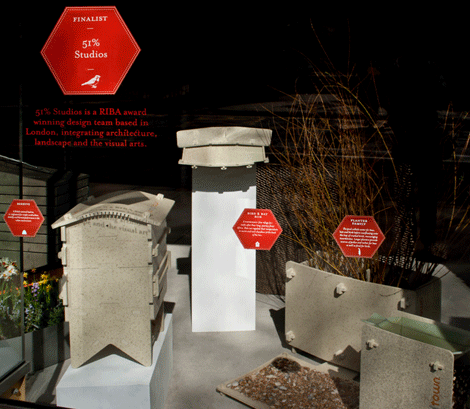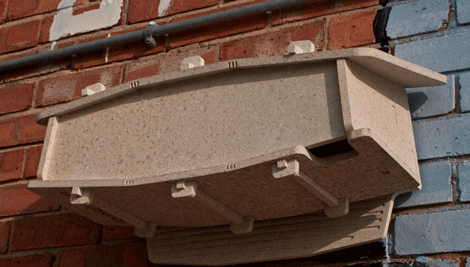
51%’s flatpack beehives, bird boxes and planters, made from leftover insulation linings of cars, fridges and insulation
Architectural practice 51% Studios’ ‘Habi Sabi’ concept to create urban wildlife habitats has triumphed over fellow finalists in the InMidtown Habitats competition.
Its easy-to-assemble, flatpack beehives, bird boxes and planters, made from leftover linings and fibres of cars, fridges and insulation will now be produced by InMidtown – who ran the competition with partners, The Architecture Foundation – and installed into 570 bee and bird friendly businesses across Bloomsbury, Holborn and Saint Giles that InMidtown represent.
Entrants to the InMidtown Habitats competition were set the challenge of creating designs suitable for the varying terrain across the district, including green spaces, rooftops, and terraces of businesses in the Midtown area. The designs were then assessed by a panel of experts including a beekeeper, an ornithologist, a cost consultant and a bat expert. 51% Studios won both unanimous jury support and the majority of the public vote for their competition entry.

“The ‘Barsmark’ board that the designs are made from contains 100% recycled materials, in which resonates with our Zero to Landfill initiative, which aims to divert all waste from landfill by 2015 by reusing or recycling all waste from Holborn, Bloomsbury and Saint Giles in a closed loop system,” said Tass Mavrogordato, CEO of InMidtown, possibly on his way to the nearest bottle bank.
A happy Catherine du Toit from 51% Studios Architecture, commented: “Our team of four designers named the design after the Japanese concept of ‘Wabi Sabi’, which finds beauty in nature and simplicity. We went right to the heart of the challenge and consulted with both ornithologists and ecologists to get a feel of what the city landscape would look like to wildlife.
“Realising that the city appears very like a mountain to a bird, but without the rich habitat, we haven’t just made nestboxes and planters to provide nectar and seeds but also included a tiny pool and tray of gravel offering water and habitats for invertebrates.”






